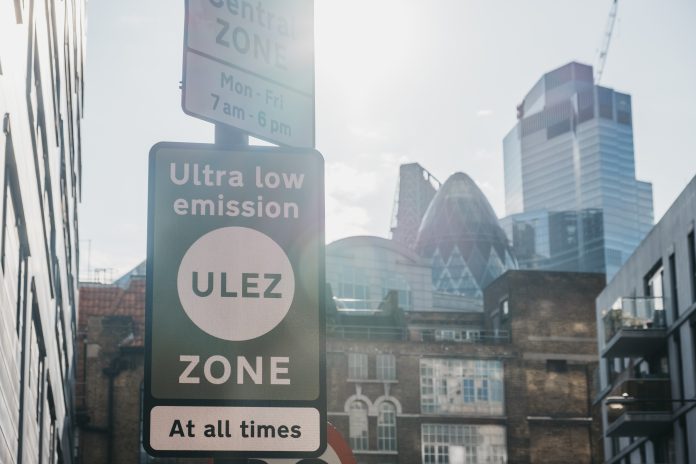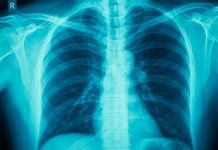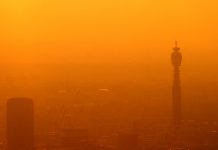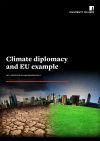Daikin reviews whether air pollution in the UK has improved over the years and details how chemical compounds and matter existing in our air pose a threat to our planet
There’s no question about it, climate change can no longer be ignored. The ongoing threat to mankind and the entirety of life on earth must be tackled.
As dramatic as that may sound, it is the reality. The impact of climate change upon the planet will be nothing short of colossal-scale dramatics, for every living creature here. Even Bill Nye, who holds a place in the hearts of Americans akin to how British people embrace Sir David Attenborough, isn’t sugar-coating it.
On Last Week Tonight, Bill Nye said, “By the end of this century, if emissions keep rising, the average temperature of the Earth could go up another four to eight degrees.”
This message has been reiterated by Sir David Attenborough. During his appearance on Climate Change — The Facts he delivered the difficult truth in a raw and uncompromisingly clear message: that global warming is the greatest threat the planet has witnessed in thousands of years.
As scary as it is, there are preventative measures we can take. The world’s governments have, by and large, agreed to cleaning up their emissions and waste in recent years. We’re recycling more and looking at renewable sources of energy. We’re removing single-use plastics from our supply chain and swapping our energy-inefficient appliances for more eco-friendly options, such as condensing boilers and energy-saving bulbs.
Considering these measures, we have to ask ourselves — are we improving? One way to gauge improvements is via the air quality statistics report released by the Department of Environment, Food, and Rural Affairs (DEFRA).
Which factors influence the UK’s air quality?
Before delving further into potential improvements, we must be clear on influential factors. We all know pollutants from vehicles and fossil fuels are a prime contributor to dangerous emissions and poor air quality, but other factors can also affect our air quality, such as:
- Emissions from Europe and the wider world
- Weather conditions, such as heat in the summer, can cause changes in air quality
What is the air made up of?
NO2
What is N02?
Nitrogen dioxide, or NO2, is measured in the air in micrograms (µg). It is produced by burning fossil fuels, such as coal, as a primary component released directly into the air. It can also be produced as a secondary component when nitrogen oxide and ozone react in the air, producing nitrogen dioxide and oxygen.
Is NO2 bad?
NO2 can have a dangerous effect on asthmatic people. DEFRA notes that NO2 can inflame the lungs, damage how our lungs work and aggravate the symptoms of asthma. NO2 also has an adverse effect on crops and vegetation.
Have we seen a decreased amount of NO2 in the UK?
Since 1990 we have seen a dramatic decrease in NO2 levels. In particular, there was a rapid decrease in the amount of NO2 in the air between 1992 and 2002, with an average yearly reduction of around 2.7 μg/m3.
PM10
What is PM10?
Particulate matter, or PM, particles could be solid or liquid, come from natural or human sources, and can be a variety of sizes. Particulate matter concentration in the air is measured in micrograms per cubic metre (µg m–3). Particulate matter itself is measured in diameter from as small as a nanometre (nm), such as viruses, to micrometres (µm), such as human hair (100 µm).
Covering particulate matter that is less than or equal to 10 µm in diameter, PM10 can range in size. Some examples of particulate matter of this size range include:
- Dust (<10 µm)
- Pollen (<10 µm)
- Red blood cells (7-8 µm approx.)
There are two different component groups of particulate matter: primary components, which are released into the air from a source directly (such as pollen from a plant), and secondary components, which are created by chemical reactions in the atmosphere, (such as sulphate, which forms when sulphur dioxide oxidises in the air to create sulphuric acid, which then reacts to ammonia to create ammonium sulphate in the air).
Is PM10 bad?
Small particulates in the air can pose a danger to human health. There is evidence to suggest particulate matter with a diameter of 2.5 µm or less is particularly harmful; carbon and trace metals in the air, for example. These particulates have been linked to respiratory and cardiovascular illnesses.
Have we seen a decreased amount of PM10 in the UK?
Between 1992 and 2018 we have seen a considerable decreased in urban background PM10 pollution (according to research from DEFRA). The most dramatic fall was between 1992 and 2000, with an average yearly reduction of around 1.6 μg/m3. However, the increase in PM10 between 2017 and 2018 has been noted as “statistically insignificant” by the report.
PM2.5
What is PM2.5?
PM2.5 also describes a particular matter which pollutes the air. It is measured the same way and covers particulates with a diameter of 2.5 µm or less. Basically, these are some of the smallest particulates in the air that the country monitors. Like PM10, PM2.5 can come from manmade or natural sources and can be primary components released directly from the source to the air, or secondary components formed from a chemical reaction within the air.
Examples of these particles include:
- Combustion particles (<2.5 µm)
- Nanotube electrodes (1 µm)
- Trace metals (<2.5 µm)
Is PM2.5 bad?
Like PM10, PM2.5 can be damaging to respiration. These tiny particles can cause, as well as aggravate, respiratory diseases, cause plaque deposits in the arteries, and even lead to heart attacks or strokes. PM2.5 tend to stay in the air much longer than PM10 due to being lighter, which means people have a greater chance of inhaling them. Plus, as they are so small, the nose and lungs are not always able to filter them before they reach our lungs. The elderly and children are particularly vulnerable to this.
Have we seen a decreased amount of PM2.5 in the UK?
Thankfully, we have seen a significant decrease in PM2.5 over recent years. PM2.5 has decreased for urban background pollution compared to 2009, with the average yearly concentration of 9.5 μg/m3 in 2017 the lowest in the recorded range. As with PM10, the increase between 2017 and 2018 is seen as “statistically insignificant”.
O3
What is O3?
You will most likely be familiar with O3, or ozone. Like NO2, it is measured in μg. It protects the Earth from ultraviolet rays from the sun, and it is being destroyed by manmade emissions. Ozone is a good thing, we’re all told.
This is up for debate, however. As AirNow explains, when it comes to ozone, it is “good up high, bad nearby”. Essentially, when ozone is high up in the planet’s stratosphere, it’s good. It’s protecting us, and we’re also not breathing it in at this level. But at ground level, (the troposphere), ozone is bad news for people and plants alike.
Is O3 bad?
The creation of O3 depends on chemical reactions between nitrogen and volatile organic compounds, which in turn, come from industrial emissions, vehicles, and solvents. It is particularly prominent in the summer months, as these chemical reactions occur under the heat of the sun.
If you take in too much O3 you could start seeing the following symptoms:
- Throat irritation
- Lung irritation and coughing
- Chest pains
- Reduced lung function
- Inflammation of the lungs
What’s more, Ozone can be damaging to crops. It also makes plants more susceptible to diseases and pests.
Have we seen a decreased amount in the UK?
Unfortunately, we have seen an increase in the background of ozone pollution. DEFRA notes that the last decade has been “stable”. Between 2017 and 2018, the concentration of O3 increased from 58.3 μg/m3 to 62.8 μg/m3. There are a few reasons why this increase may have occurred:
- Hot weather conditions create high ozone concentrations, and so, the heatwaves experienced in the UK in 2018, 2006, and 2003 – will have caused notable increases in O3.
- The UK and Europe have reduced their nitrogen oxide emissions as a whole. Nitrogen oxide is known to reduce ozone formation. This is something of a double-edged sword: we have reduced nitrogen oxide emissions, which has, in turn, reduced nitrogen dioxide pollution in the air (which is formed from nitrogen oxide and ozone reacting in the air, producing nitrogen dioxide and oxygen). But in doing so, the ozone in the air has nothing to react to, meaning it stays!
All facts considered, we are certainly seeing some improvements in regard to air pollution in the UK. We still have a lot of work to do, particularly with our O3 levels. We also need to take drastic action in other climate change-causing behaviours, such as waste and recycling.
Sources:
https://www.bbc.co.uk/news/entertainment-arts-47988337
https://blissair.com/what-is-pm-2-5.htm
https://www-ssrl.slac.stanford.edu/content/sites/default/files/documents/nano-lab-safety.pdf
https://uk-air.defra.gov.uk/assets/documents/reports/aqeg/pm-summary.pdf
https://uk-air.defra.gov.uk/assets/documents/reports/aqeg/nd-summary.pdf
https://cfpub.epa.gov/airnow/index.cfm?action=gooduphigh.index
Editor's Recommended Articles
-
Must Read >> Air pollution: A major environmental risk to health































